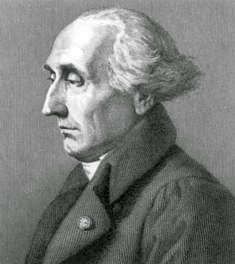The recent posts on the photoelectric effect exhibits Planck's constant $h$ as a conversion standard between the units of light frequency $\nu$ in $Hz\, = 1/s$ as periods per second and electronvolt ($eV$), expressed in Einstein's law of photoelectricity:
- $h\times (\nu -\nu_0) = eU$,
where $\nu_0$ is smallest frequency producing a photoelectric current, $e$ is the charge of an electron and $U$ the stopping potential in Volts $V$ for which the current is brought to zero for $\nu > \nu_0$. Einstein obtained, referring to Lenard's 1902 experiment with $\nu -\nu_0 = 1.03\times 10^{15}\, Hz$ corresponding to the ultraviolet limit of the solar spectrum and $U = 4.3\, V$
- $h = 4.17\times 10^{-15} eVs$
to be compared with the reference value $4.135667516(91)\times 10^{-15}\, eV$ used in Planck's radiation law. We see that here $h$ occurs as a conversion standard between Hertz $Hz$ and electronvolt $eV$ with
- $1\, Hz = 4.17\times 10^{-15}\, eV$
To connect to quantum mechanics, we recall that Schrödinger's equation is normalized with $h$ so that the first ionization energy of Hydrogen at frequency $\nu = 3.3\times 10^{15}\, Hz$ equals $13.6\, eV$, to be compared with $3.3\times 4.17 = 13.76\, eV$ corresponding to Lenard's photoelectric experiment.
We understand that Planck's constant $h$ can be seen as a conversion standard between light energy measured by frequency and electron energy measured in electronvolts. The value of $h$ can then be determined by photoelectricity and thereafter calibrated into Schrödinger's equation to fit with ionization energies as well as into Planck's law as a parameter in the high-frequency cut-off (without a very precise value). The universal character of $h$ as a smallest unit of action is then revealed to simply be a human convention standard without physical meaning. What a disappointment!
This fits with the article Quantum Theory without Planck's Constant ny John P. Ralston:
- Planck's constant was introduced as a fundamental scale in the early history of quantum mechanics. We find a modern approach where Planck's constant is absent: it is unobservable except as a constant of human convention.
Finally: It is natural to view frequency $\nu$ as a measure of energy per wavelength, since radiance as energy per unit of time scales with $\nu\times\nu$ in accordance with Planck's law, which can be viewed as $\nu$ wavelengths each of energy $\nu$ passing a specific location per unit of time. We thus expect to find a linear relation between frequency and electronvolt as two energy scales: If 1 € (Euro) is equal to 9 Skr (Swedish Crowns), then 10 € is equal to 90 Skr.


,_Physicist.jpg)
























